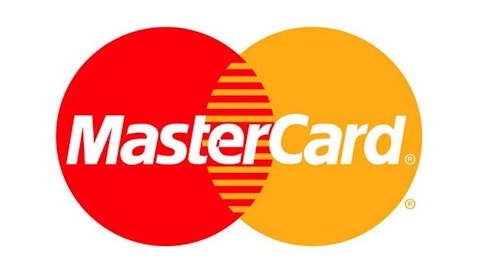In 2011, when Netflix, Inc. (NASDAQ:NFLX) split its DVD-by-mail and streaming businesses (effectively raising prices by as much as $6 per month), the company precipitated a storm of customer outrage. Netflix’s plan to spin off the DVD business as “Qwikster” was eventually abandoned, but the damage was done. While the streaming business has recovered, Netflix’s DVD-by-mail service has shrunk to just over 8 million subscribers as of last quarter, down from 14 million at the time of the split.

Building loyalty?
Netflix’s biggest challenge at present is that competitors have been growing their streaming offerings recently, and none faster than Amazon.com, Inc. (NASDAQ:AMZN) . Amazon has picked up a number of high-profile shows for its Prime Instant Video service in recent months, many of which were previously available on Netflix. With Amazon rapidly increasing its offerings, charging less ($79 per year or $39 for students, versus $96 for Netflix), and throwing in free two-day shipping on physical purchases, Netflix needs a “differentiator” to keep subscribers on board.
Indeed, Bank of America analysts recently estimated that Netflix loses 5% to 6% of its subscriber base every month. The main justification for Netflix’s expansion into original content with series like House of Cards is to increase subscriber loyalty and reduce so-called “churn.” High churn becomes a bigger worry the larger Netflix’s subscriber base becomes. With around 20 million paid domestic subscribers at the end of 2011, Netflix needed to add at least 1 million subscribers per month just to stand still. However, if the membership base doubles to 40 million, Netflix would have to add 2 million subscribers per month to offset churn.
By offering original shows that are not available elsewhere, Netflix aims to mimic Time Warner Inc. (NYSE:TWX)‘s success with HBO. (A Netflix spokesman recently stated, “Part of our goal is to become like HBO faster than HBO can become Netflix.”) HBO has built a worldwide subscriber base of 114 million households by offering a combination of second-run movies and original TV shows. While HBO still experiences significant churn of approximately 3% monthly, reducing churn to that level would be a big win for Netflix and could help the company maintain its domestic growth for a longer period of time.
Binge-viewers wanted
Unfortunately, Netflix’s decision to release all 13 episodes of House of Cards on Feb. 1 did not support the ultimate business goal of reducing churn. Netflix CEO Reed Hastings has said that customers want the convenience of being able to watch shows at their own pace. In particular, Netflix is catering to the desires of “binge-viewers,” who want to watch the whole series at once. However, in trying to be customer-friendly, Hastings gave customers the ability to watch the whole series within a single month — and thus pay for only a month of Netflix service.
Since customers who want to see House of Cards can watch the full season in one month and then cancel, the series will not have much of an independent impact on churn. By contrast, if episodes were released one at a time over the course of several months, Netflix could expect fans of the show to keep the service for at least those months. In releasing all the episodes at once, Netflix is gambling that the show will attract new members, who will then find other content they enjoy and decide to keep the Netflix service. To put it a different way, if subscribers pay for one month of service to binge-view the full season of House of Cards, Netflix would need to attract more than 6 million additional viewers to meet Season 1’s $50 million production cost.
Giving away the store
Moreover, not all viewers are actually paying. While I applaud Netflix’s decision to make the first episode of House of Cards available for free to “hook” people, the company’s policy of offering free one-month trials for all new users will allow many people to watch the full season for free. Additionally, Netflix has been aggressively courting former members with free “trials” for returning members. (As a former Netflix member, I received at least four emails last fall offering me a free month if I rejoined the service. I got my free month, enjoyed House of Cards and other content, and then canceled.) In the short term, Netflix may boost its subscriber numbers this way, but the company is not maximizing the value of its investments in original content.
Conclusion
In short, Netflix’s business model seems flawed. The company spent too much for the rights to House of Cards to give the show away for free (or at most, $7.99) to binge viewers. If original content is meant to reduce churn, it needs to be released in a “serial” manner that forces viewers to keep the service. That might seem less customer-friendly, but it would better ensure Netflix’s long-term health.
The article Netflix May Be Getting Too Customer-Friendly originally appeared on Fool.com and is written by Adam Levine-Weinberg.
Fool contributor Adam Levine-Weinberg is short shares of Netflix and Amazon.com. The Motley Fool recommends Amazon.com and Netflix. The Motley Fool owns shares of Amazon.com and Netflix.
Copyright © 1995 – 2013 The Motley Fool, LLC. All rights reserved. The Motley Fool has a disclosure policy.





